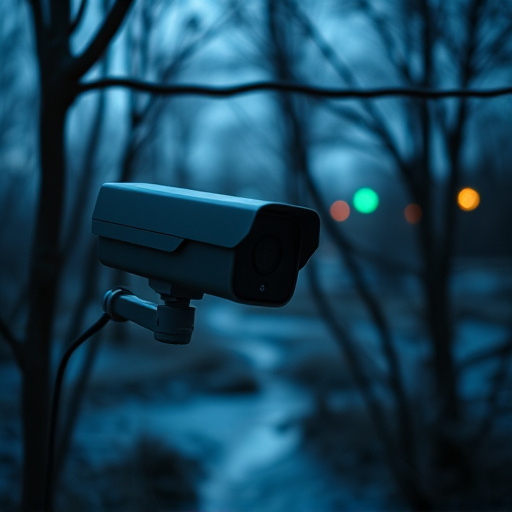Tiny cameras for home monitoring blend into everyday objects, offering remote access via smartphone apps. Advanced features like motion detection, night vision, and machine learning algorithms enhance automated recording. Smartphone apps with visual inspection tools and infrared/UV lights aid in detecting these covert recorders, protecting privacy and security in an era of expanding surveillance technology.
Uncover the hidden eyes watching your every move with our guide to detecting tiny cameras used for home monitoring. From understanding the diverse types of covert surveillance devices to leveraging smartphone apps, visual inspection techniques, and even infrared and UV light, this comprehensive resource equips you with the knowledge to identify potential threats. Explore advanced tech solutions to stay ahead in the fight against privacy invasion.
- Understanding Hidden Camera Types
- Smartphone Apps for Detection
- Visual Inspection Techniques
- Infrared and UV Light Uses
- Advanced Tech Solutions
Understanding Hidden Camera Types
Hidden cameras, also known as surveillance devices, come in various types and sizes, each with unique capabilities and purposes. Among them, tiny cameras for home monitoring have gained popularity due to their discreet nature and advanced features. These micro cameras are often built into everyday objects like light bulbs, power outlets, or even paintings, making them nearly invisible to the naked eye. They offer remote access via smartphone apps, allowing users to monitor their homes from anywhere at any time.
Additionally, there are more sophisticated hidden camera types with advanced functionalities such as motion detection, night vision, and wide-angle lenses. These devices can be activated remotely or programmed to record automatically when specific conditions are met. Understanding these different types of hidden cameras is crucial for anyone looking to protect their privacy and security, especially in the age of increasing surveillance technology availability.
Smartphone Apps for Detection
Smartphone apps have emerged as powerful tools in the quest to detect hidden cameras, offering an accessible and portable solution for home monitoring. These applications utilize various techniques, from analyzing visual feeds to detecting infrared signals, to identify potential covert recording devices. One of the most popular methods involves using the phone’s camera to scan for tiny cameras often used in home surveillance, which may be disguised as everyday objects like smoke detectors or light bulbs.
Many apps also leverage machine learning algorithms to enhance their accuracy, enabling users to quickly and efficiently search for hidden recording devices within their surroundings. This technology not only assists individuals in securing their privacy but also empowers them to take proactive measures against potential security breaches, ensuring a safer digital environment.
Visual Inspection Techniques
Visual inspection is a fundamental first step in identifying hidden cameras, especially those designed for home monitoring—tiny cameras that can be nearly invisible to the naked eye. Skilled individuals can use their smartphones to perform a thorough visual scan of rooms and spaces. This involves looking for any unusual objects or equipment, such as small, round lenses, LED lights, or even subtle reflections on surfaces. Modern smartphones with high-resolution cameras can capture detailed images and videos that aid in this process, allowing users to zoom in and analyze potential camera locations.
Additionally, certain apps available on mobile devices offer advanced visual inspection tools. These apps utilize image processing algorithms to enhance contrast, detect heat signatures, or even analyze patterns in real time, further assisting in the detection of hidden cameras. By combining these techniques with a trained eye for detail, smartphone users can effectively navigate and ensure their privacy in various settings.
Infrared and UV Light Uses
Infrared (IR) and Ultraviolet (UV) lights offer unique capabilities for detecting hidden cameras, especially those designed for home monitoring that are often tiny and difficult to spot. IR light, which is beyond human visible range, can reveal the heat signature of electronic devices, helping to uncover covert recording equipment. When a smartphone’s camera captures an IR image, it can pick up on unusual warm spots that might indicate the presence of a hidden camera. Similarly, UV light has proven effective in detecting certain types of camera sensors and circuitry that emit faint UV signals. By using dedicated apps or modifications to their smartphones’ cameras, users can scan areas with UV light and look for faint glows or patterns that could point to hidden surveillance devices, making it an innovative DIY solution for home security.
Advanced Tech Solutions
With the rise of tiny cameras for home monitoring, advanced tech solutions have emerged to help users detect hidden devices. Smartphones, equipped with powerful sensors and sophisticated software, offer a practical approach to identifying these clandestine recorders. Apps designed specifically for camera detection utilize infred technology, image analysis, and machine learning algorithms to scan environments for any signs of covert surveillance.
These applications can pinpoint the location of hidden cameras by detecting unusual light patterns, analyzing video feeds in real-time, or even uncovering hidden lenses. This innovative use of smartphone technology empowers individuals to take control of their privacy and security, ensuring peace of mind in an era where digital surveillance is a growing concern.
Detecting hidden cameras has evolved with the help of modern technology, offering various methods using smartphone apps and innovative tools. From understanding different camera types to employing infrared light and UV light, these techniques empower individuals to safeguard their privacy in today’s digital age. While advanced tech solutions provide an extra layer of security, combining these practical smartphone methods ensures a comprehensive approach to identifying even the tiniest cameras for home monitoring, making it easier to maintain a secure living environment.
